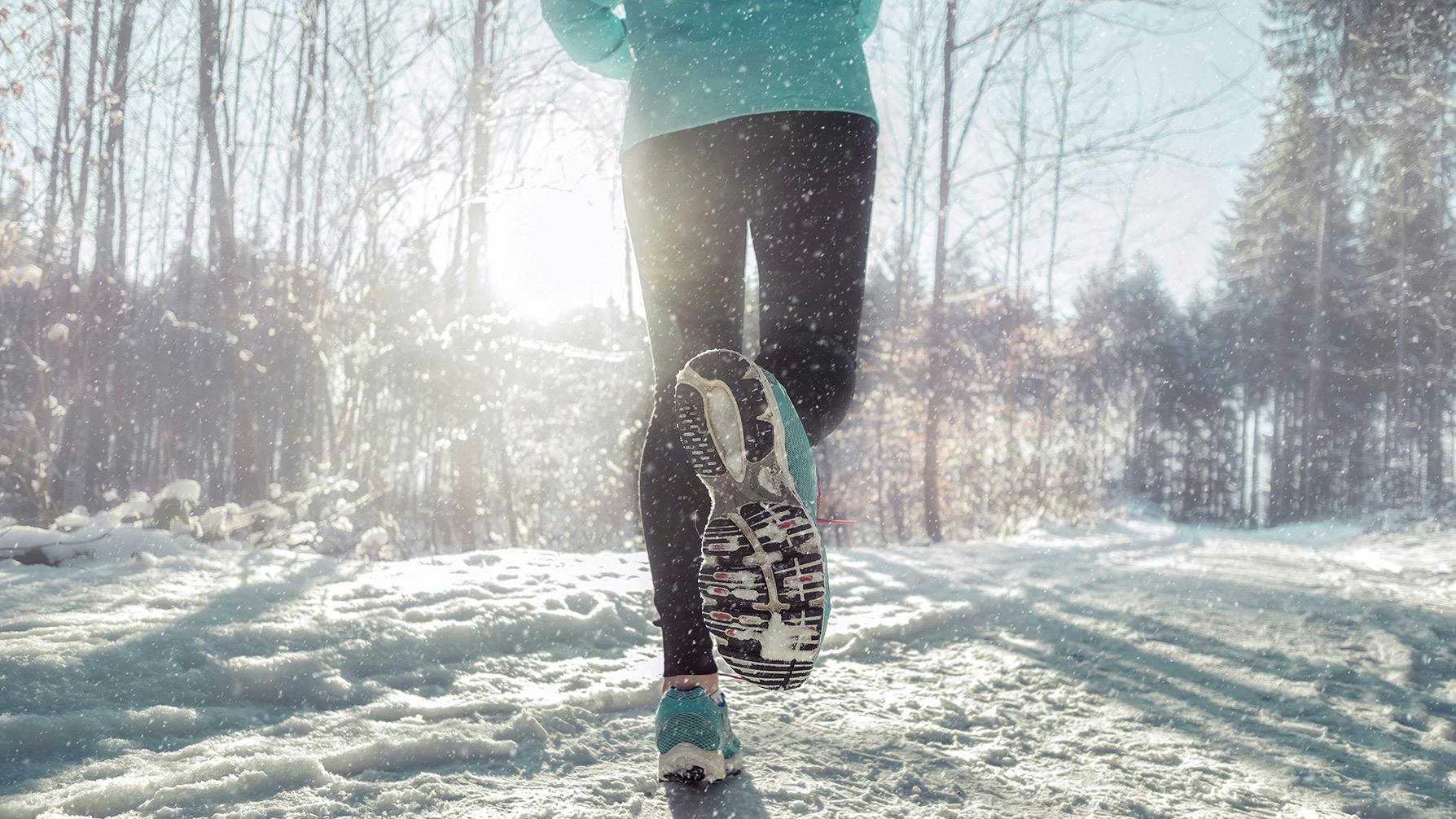The ideas and suggestions written below are provided for general educational purposes only and should not be construed as medical advice or care. Always seek the advice of a physician or other qualified health provider before beginning any physical fitness or health- and nutrition-related activity.
As the cold weather hits, many of us take our workouts indoors during the chilly months but don't forget that running outside remains a good option, even in the winter. The key to successful winter running is to be prepared. Here are 7 tips to make your winter runs more enjoyable.

Tip 1. Dress for the Occasion.
I often get asked what to wear when running in the cold. My answer? Layers are your friend. You might be chilly as you step out the door, but it’s normal to warm up as you get going. Layering makes it easy to stay comfortable throughout these temperature shifts.
Start with a thermal base layer made of wool or polypropylene topped with a wind/water resistant jacket. For extra cold days, throw on a vest under your jacket for extra warmth. On the bottom, a nice pair of half-tights or leggings are perfect to keep your legs warm. Bare skin can be tough, especially in winter conditions.
Consider the temperature and the “real feel” before dressing. Temps below -4F are considered too cold to be exercising outdoors, but you should also consider the “real feel.” This takes into account the humidity, cloud cover, wind, sun angle, etc. to describe how the air really feels. Both of these numbers should influence your decision to exercise in the outdoors. A temperature of 10F but a real feel of -5F might make it a better day to stay indoors.
Pro tip: Start with an outfit that’s warmer than you think you need; you can always take layers off.
Tip 2. Take Care of Those Digits.
Nothing is worse than freezing hands, especially as they start to thaw. Ouch!
Choose either gloves or mittens, depending on the temperature. If it’s wet or windy outside, consider a material that will protect your fingers.
I use both gloves and mittens, but I’ve never been upset when opting for the warmer option. Another pro tip is to use hand warmers. Many a winter run have been salvaged by placing hand warmers in my mittens or gloves. They can be a life saver!
Tip 3. Mind Your Shoe Choice.
Another question that often comes my way is, "Is it safe to run in the winter weather?". The key to ensure that it’s a safe outing, especially in the ice and snow, is by opting for footwear with good traction.
Choose trail shoes with grippy tread and enough material to keep your feet protected. Many shoes use weatherproof material to keep your feet warm and dry.
When it’s really snowy or icy, it’s a good idea to add more traction to your shoes. Use products you can slip on over your shoes and make running on slick surfaces safer.
Tip 4. Cover Your Head and Neck.
A lot of body heat escapes through our head, so cover up to stay warm. A lightweight, moisture wicking hat is the best option – especially as you start to sweat.
Headbands are a good alternative when temps aren’t too cold, but you still want some coverage. Similarly, a buff or neck gaiter can add a lot of warmth on really chilly days. In fact, sometimes covering your neck can feel warmer than adding another layer.
Tip 5. Rethink Your Nutrition Plan.
What changes you should make to your nutrition plan?
When it’s cold out, eating your go-to running fuel can be tough. Gels and gummies can freeze and become hard to bite into. To prevent this, I keep my fuel in an inner pocket close to my body to keep them warm and easy to eat.
Another tip - consider the flavor. Indulgent flavors like chocolate, vanilla, and mocha tend to taste better in the cold, while citrus and fruity flavors tend to be more refreshing on those warm summer days.
Solid foods are also easier to get down in cooler weather and a great choice for those long, slow runs. My personal favorite? CLIF BARS®. These bars not only taste great, they have an ideal mix of fast-acting and longer-lasting carbohydrates to help keep me fueled and energized.
Tip 6. Add Some Flavor to Your Water.
Dehydration can be hard to spot when it’s cold outside, and fluid needs increase in winter climates—especially if you’re running at altitude. So, make sure to drink, drink, drink!
Drinking plain water in the cold can be tough. For that reason, I add electrolytes to my bottles or hydration reservoir. It tastes so much better to drink something sweet and flavorful when it’s chilly out.
If I’m worried about my drink freezing, I’ll add hot water when mixing it up. It doesn’t stay hot for the run and it takes longer to freeze.
Pro tip: If using a water reservoir with a hose, blow air back through the hose after drinking to prevent any freezing in the tube.
Tip 7. Warm Up with Your Post-Run Fuel.
“When temps are cold, I like to finish my run with something warm. My favorite post-run food and drink combination is warm milk with CLIF® Builders®. With carbohydrates to help restore energy and 20g of complete plant-based protein to help rebuild muscle – these bars are one tasty way to end a tough workout!”
